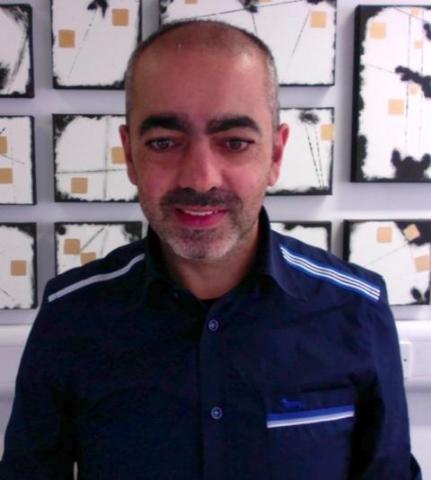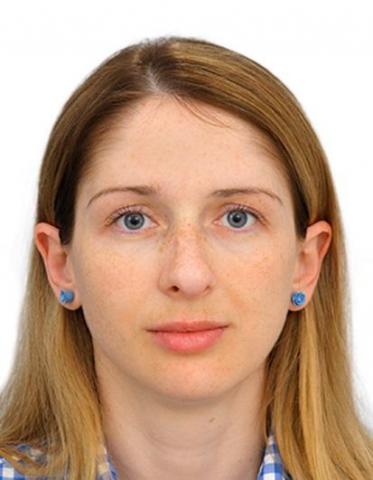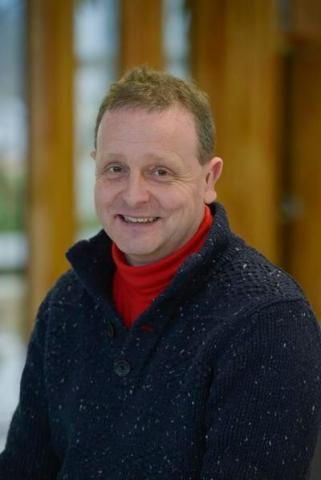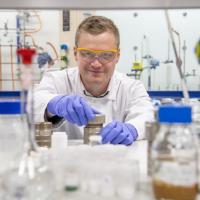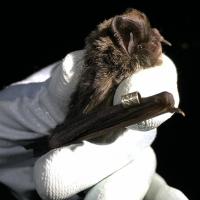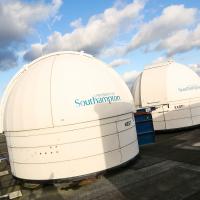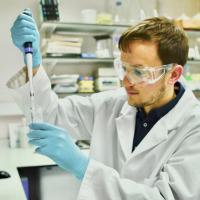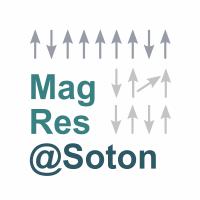Technical specification
Varian Inova 600 MHz Solution NMR System with cryoprobe (room 27/1141)
Configured with a 5 mm 1H, 13C, 15N inverse detection probe with the electronics cooled to 20 K to enhance signal to noise, this system is aimed at biomolecular NMR with the emphasis on protein structure, protein/ligand interactions, affinity measurements, protein dynamics as well as qualitative/quantitative metabolite analysis. Exploring the molecular world using NMR has many possibilities so please see the NMR entry in the Techniques section which also details what you need to think about in terms of sample preparation and amount.
Varian NMR System 600 MHz Dual Solids/Solution NMR System (room 27/1141)
This system features three room temperature solution probes: a standard 5 mm HCN triple resonance; a 5 mm pentaprobe covering HCNPD; and, an 8 mm HCN probe tunable to 19F. The 3.2 mm and 1.6 mm solid state probes can spin samples at up to 20 kHz and 40 kHz respectively and be equipped with low-gamma accessories extending the range of nuclei available for study. This system is routinely used to investigate protein/membrane interactions and effects, protein structure in microcrystalline and fibrillar form and new NMR methodologies to extract novel information about biomolecular form and function. Exploring the molecular world using NMR in the solid state has many possibilities so please see the NMR entry in the Techniques section which also details what you need to think about in terms of sample preparation and amount.
Bruker Neo 400MHz Wide Bore Solids NMR System (room 27/1141)
The 400MHz system is equipped with high power amplifiers and is routinely used to investigate the behaviour of lipids in membranes in the presence of peptides and proteins as well as the states of catalysts in material science. A range of probes are available including 3.2mm, 4mm and 6mm magic-angle spinning probes and a 5mm single resonance static probe which are tuneable to a broad range of nuclei. Experiments can be conducted at a range of temperature from –100C to 120C. Exploring the molecular world using NMR has many possibilities so please see the NMR entry in the Techniques section which also details what you need to think about in terms of sample preparation and amount.
Bruker Avance II+ 600MHz solid-state NMR system (room 27/1085)
This triple-resonance NMR system features a wide range of solid-state NMR probes for magic-angle-spinning and static NMR experiments, including a 7mm HX, a 4mm HX, a 4mm TX and a 2.5mm TR Bruker solid-state probes. The system also supports high-resolution solution NMR experiments and is equipped with a Bruker 5mm BBI probe with z-gradient. A world-unique cryogenic magic-angle-spinning NMR probe is also available. This probe uses the evaporation of liquid He to spin and cool the sample. The lowest achieved sample temperature is 10 Kelvin, at a spinning frequency of 10 kHz. We have also developed NMR probes for experiments on static samples at temperatures down to approximately 1.5 K.
Bruker Avance III 500MHz solution-state NMR system (room 27/1119)
This 500 MHz solution NMR system is equipped with a wide range of solution NMR probes and also microimaging equipment including a 10mm BBO, a 5mm TBO, a 5mm BBI probes with z-gradient plus a MICWB40 micro-imaging probe equipped with 1H, 1H/13C and 1H/15N 10mm and 25mm resonators. This system hosts a custom-made shuttle for rapid sample shuttling experiments at two (or more) fields.
Bruker Neo 400MHz NMR system (room 27/1119)
This system is constituted by a 9.4T widebore Oxford Instrument magnet coupled to 400 MHz Bruker Neo Consolle and is equipped with a 5mm and a 10 mm Bruker BBO solution NMR. This system hosts a custom-made fast sample shuttle and a Magnetically shielded chamber; therefore, it can work as a dual-magnetic-cores spectrometer with a probe at 9.4 T and a second probe at 2 μT (variable between +/- 1 mT) for rapid sample shuttling experiments at two fields.
300 MHz Avance III Bruker system (room 27/1097)
This system is constituted by a 7T widebore Oxford Instrument magnet coupled to a Bruker Avance III consolle with a 3-axis gradient system for micro-imaging experiments. It is equipped with a Bruker MICWB40 microimaging probe with 1H and 1H/13C 10 mm resonators and a 10 mm Varian double resonance observe 1H - 13C/15N probe for liquid samples. This system hosts a custom-made temperature-controlled shuttle that keeps the sample temperature constant while shuttling the whole sample along the magnetic field axis and can work as a dual-magnetic-core system that hosts a probe at 7 T and a probe and 3D-axis gradients at 46mT (500 kHz for 13C) for 3D diffusion studies and relaxation measurements in porous media.
700 MHz NB Bruker Neo system (room 27/1097)
This 700MHz Bruker system is made by a Bruker Ascend 700 NB magnet coupled to a Neo consolle and a SampleJet. It is equipped with a Bruker BBO 5 mm probe for liquids and a Bruker TCI prodigy 5 mm cryoprobe. The TCI CryoProbe Prodigy is designed for the highest 1H and 13C sensitivities, short pulse widths, and the highest 2H sensitivity, resulting in optimal lock stability. It can be used for the usual inverse triple resonance experiments 1H {13C, 15N} and 13C and 19F observation experiments
Magritek Spinsolve 80
We have a 1.4 T desktop magnet from Magritek (Spinsolve 80) that is coupled to a custom-made PHIP/SABRE polariser to perform para-hydrogen assisted hyperpolarised studies.









